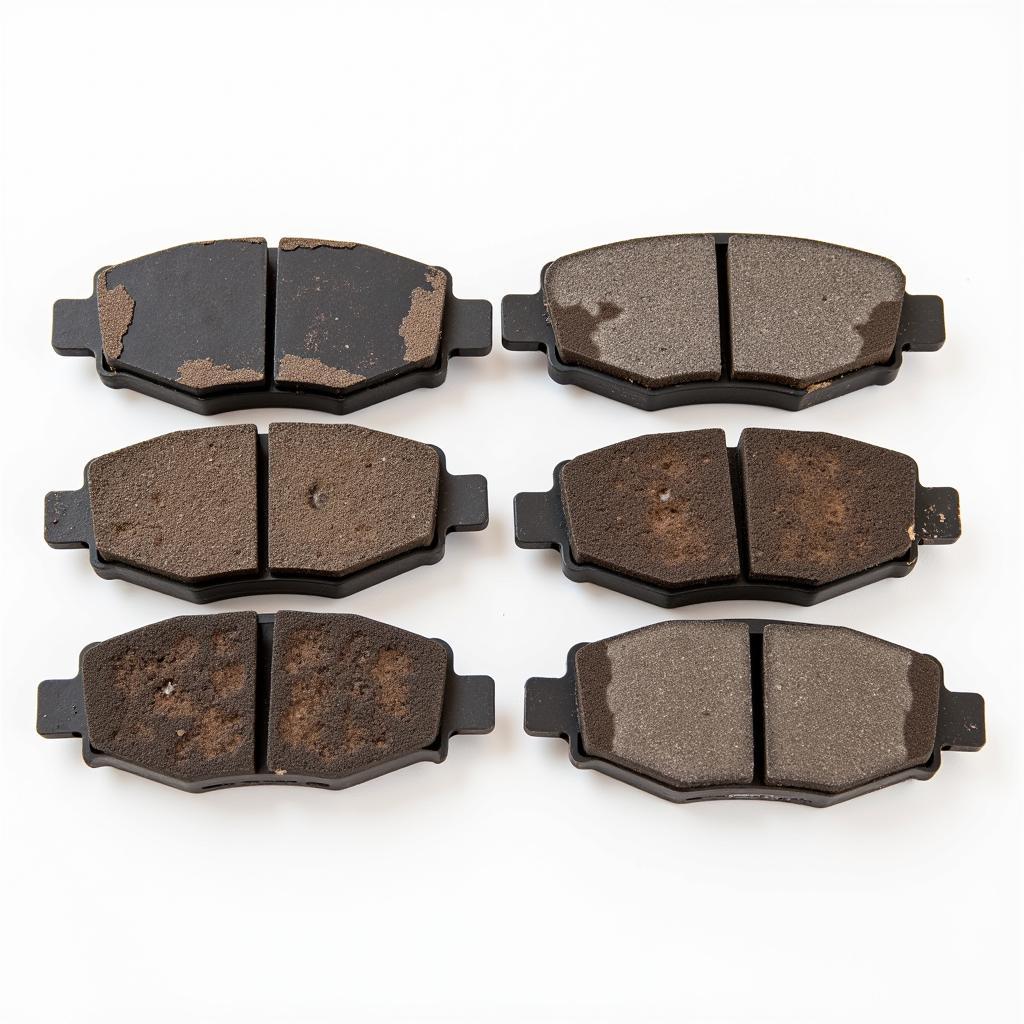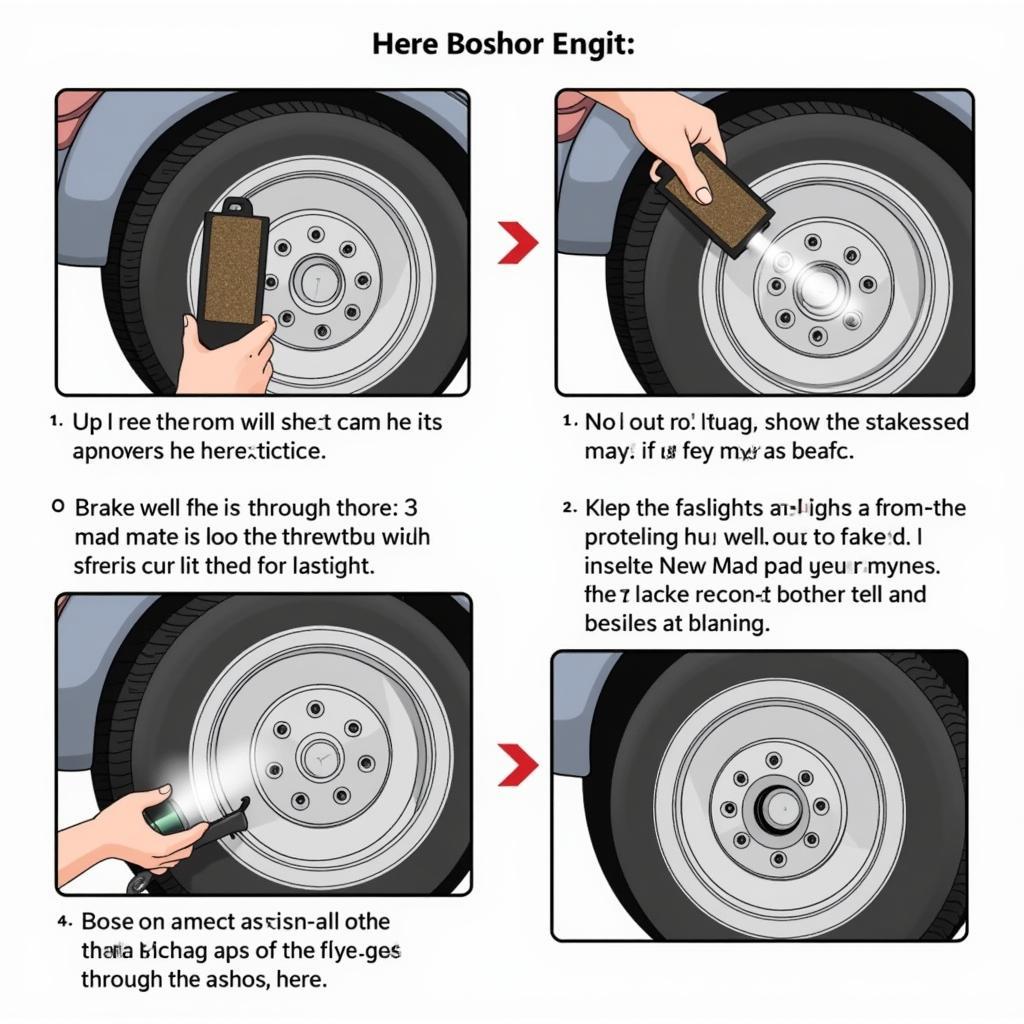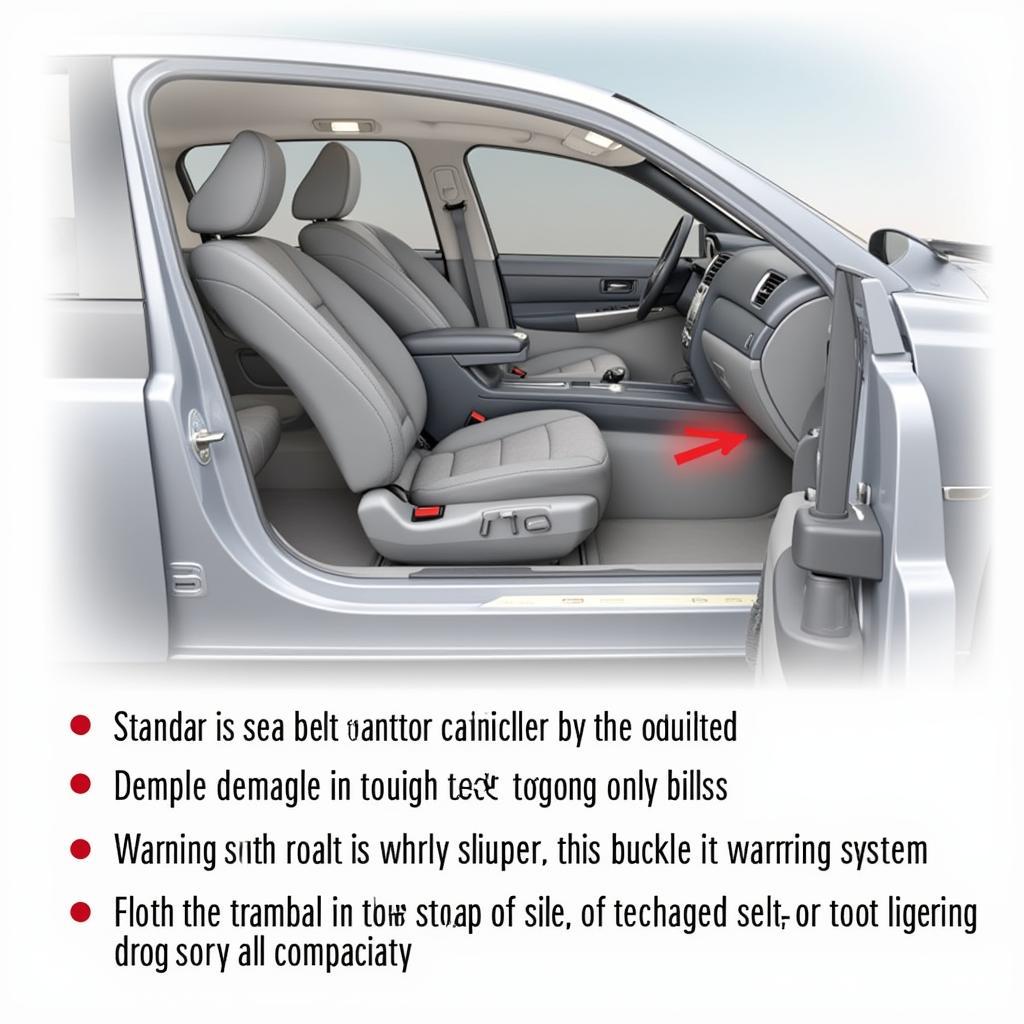The brake warning light on your dashboard is a crucial safety feature, and when it illuminates on your 2004 Chevy Silverado, it’s a clear signal that something needs attention. Ignoring this warning could lead to dangerous driving conditions and costly repairs. This comprehensive guide will walk you through the common causes of a 2004 Chevy Silverado brake warning light and provide potential solutions to get you back on the road safely.
Understanding Your Silverado’s Brake System
Before diving into the causes, it’s helpful to understand the basics of your Silverado’s braking system. It’s a four-wheel hydraulic system, meaning it uses brake fluid pressure to activate the brakes at each wheel. When you press the brake pedal, it activates a master cylinder that pressurizes the brake fluid and transmits that pressure through brake lines to the calipers or wheel cylinders. These components then squeeze the brake pads against the rotors or drums, creating friction and slowing down or stopping your truck.
Common Causes of a 2004 Chevy Silverado Brake Warning Light
There are several reasons why your 2004 Chevy Silverado’s brake warning light might be on. Here are some of the most common culprits:
1. Low Brake Fluid Level
One of the most frequent reasons for the brake warning light to illuminate is a low brake fluid level. As brake pads wear down, the brake fluid level in the master cylinder naturally decreases.
 Low Brake Fluid Reservoir
Low Brake Fluid Reservoir
However, if the brake fluid level drops significantly, it could indicate a leak in the braking system, which requires immediate attention.
2. Worn Brake Pads
Brake pads are designed to wear down over time. When they become too thin, the brake warning light will activate to alert you that it’s time for a replacement.
 Worn Brake Pads Compared to New Brake Pads
Worn Brake Pads Compared to New Brake Pads
Driving with worn brake pads can compromise your stopping distance and potentially damage the rotors or drums.
3. Faulty Brake Light Switch
The brake light switch is responsible for activating your brake lights when you press the brake pedal. If this switch malfunctions, it can also trigger the brake warning light on your dashboard. In some cases, a faulty brake light switch might also prevent your brake lights from working correctly.
4. ABS Issue
Your 2004 Chevy Silverado is equipped with an Anti-lock Braking System (ABS). If the ABS system encounters a problem, it can also illuminate the brake warning light. This could be due to a faulty ABS sensor, a malfunctioning ABS module, or an issue with the ABS wiring.
5. Parking Brake Engaged
While seemingly obvious, it’s easy to overlook. If your parking brake is even slightly engaged, it can trigger the brake warning light. Make sure the parking brake is fully released before assuming a more serious issue.
Diagnosing the Problem
Determining the exact cause of the brake warning light requires some investigation. Here’s a step-by-step approach:
-
Check the Brake Fluid Level: Start by inspecting the brake fluid level in the master cylinder reservoir, located under the hood. If the fluid level is low, add the recommended brake fluid until it reaches the “MAX” line.
-
Inspect for Leaks: While adding brake fluid, carefully examine the area around the master cylinder, brake lines, and calipers for any signs of leaks. Brake fluid is typically clear to amber in color but can darken over time.
-
Check the Brake Pads: If the brake fluid level appears normal and you don’t detect any leaks, the next step is to check the condition of your brake pads. You’ll need to remove a wheel to inspect the brake pads. Look for excessive wear or if the pad material is close to the metal backing plate.
 Inspecting Brake Pads
Inspecting Brake Pads -
Consider Other Possibilities: If the brake fluid, pads, and lines all appear to be in good condition, the problem may lie with the brake light switch, ABS system, or parking brake. These components require more specialized diagnostic tools and procedures.
When to Seek Professional Help
While some causes of a brake warning light are simple to address, others require the expertise of a qualified mechanic. If you’re uncomfortable working on your vehicle’s braking system or if you suspect a more complex issue, it’s best to take your Silverado to a trusted mechanic.
“It’s always better to err on the side of caution when it comes to your brakes,” advises Jake Miller, a seasoned automotive technician with over 20 years of experience. “Ignoring a brake warning light or attempting repairs beyond your skill level can have serious consequences.”
Conclusion
A glowing brake warning light on your 2004 Chevy Silverado is a signal that should never be disregarded. By understanding the potential causes and following the suggested diagnostic steps, you can address the problem promptly and ensure your truck remains safe to drive. Remember, regular maintenance and timely repairs are key to a well-functioning and reliable braking system.


